How Martin Waugh Makes His Astonishing Liquid Sculpture Photographs
posted Thursday, April 26, 2012 at 1:35 PM EDT
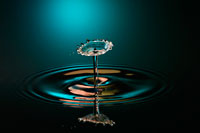 Portland, Oregon photographer Martin Waugh is obsessed with water. Trained in physics, about 10 years ago he was fascinated by high-speed photography and the balloon popping, smashing light bulb, water splashing images of Harold Edgerton.
Portland, Oregon photographer Martin Waugh is obsessed with water. Trained in physics, about 10 years ago he was fascinated by high-speed photography and the balloon popping, smashing light bulb, water splashing images of Harold Edgerton.
Seeing those images, he decided that it was the perfect way to blend his love of science and photography. He set up a rig for taking photos and began to make images à la Edgerton.
Then quite by accident, he made an important discovery.
"One night, I was taking pictures of the moment that the splash forms a column with a ball on top," he says. "But, one image was very different, in fact, it seemed physically impossible: the top of the column was flat!”
After thinking about this curious image, Waugh realized that the collision of droplets, a second ball falling on the column, had flattened it. Waugh then built a timer that could produce controlled droplet collision on command. “All single drops have pretty much the same life cycle, but when you have two drops colliding, the variations are almost endless.”
Soon his experimenting with the droplet collisions produced a series of amazing images. But Waugh seems never satisfied and is driven to continue experimenting with variations of droplet size and collision speeds and, “there was a little voice in my head talking to me like an older brother: 'That’s nice, Martin, but the real people get better light.' OK, I work to get better light. 'That’s nice, but the real people stop the motion better.' OK, I’ll work on that. 'That’s nice, but the real people have richer colors.'
Waugh follows many of the techniques set down nearly a hundred year by Edgerton, although updated for the digital age.
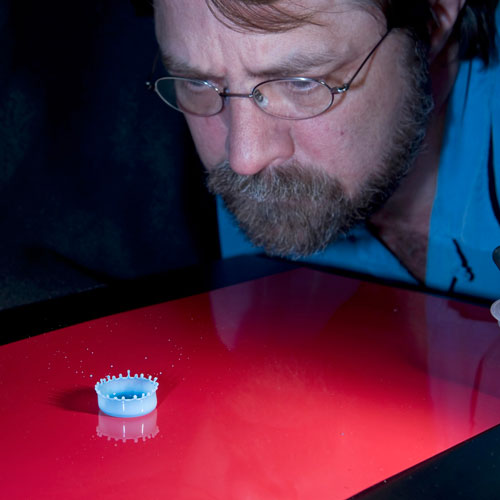 He uses a variety of Canon digital SLRs: D60, 10D, 20D, and now the 5D Mk II, but has found that the 20D with a 180mm Canon macro works the best for him. Remarkably, his stop motion flashes are rather ordinary Vivitar 285HV portable strobes,
He uses a variety of Canon digital SLRs: D60, 10D, 20D, and now the 5D Mk II, but has found that the 20D with a 180mm Canon macro works the best for him. Remarkably, his stop motion flashes are rather ordinary Vivitar 285HV portable strobes,
"When you set this flash for low power it delivers a short duration burst," he notes. "Studio flashes tend not to work as well, as they are designed for high light output and typically have long durations.”
The setting for the water drop photography is a 12x24x 1.5 inch (30x60x4cm) tray filled with water. The tray is large enough that the edges are out of the frame.
Waugh built his own timer but suggest that anyone wanting to do water drop photography look into one of the retail units available through www.cognisys-inc.com, www.bmumford.com, or www.woodselec.com.
The big issue for Waugh in photographing droplets is controlling surface tension.
"I like to use cold, distilled water to accentuate the surface tension or add a bit of soap to reduce it. With soap in the water, the splashes are taller, thinner, and harder to control. Also, the rings caused by the waves travel more slowly."
The viscosity of the water is also important and Waugh will add glycerin to the drops to make them more viscous.
Background colors are created with colored gels over the flashes and for some pictures, Waugh adds food coloring to the drops. He processes the images in Photoshop but only to clean them up and not to change what the camera saw.
It has been a fascinating nine years of water drop photography for Martin Waugh. "I had no idea what I was getting myself into or where it would lead, but the journey has been richly rewarding. I have shot over 100,000 pictures of drops and I still think of new things to try and new ways to improve them."
For more of Waugh images visit www.liquidsculpture.com.
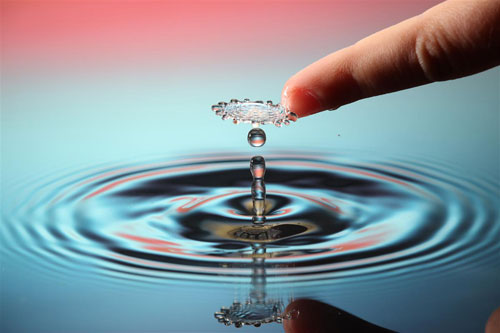
"Look at That"
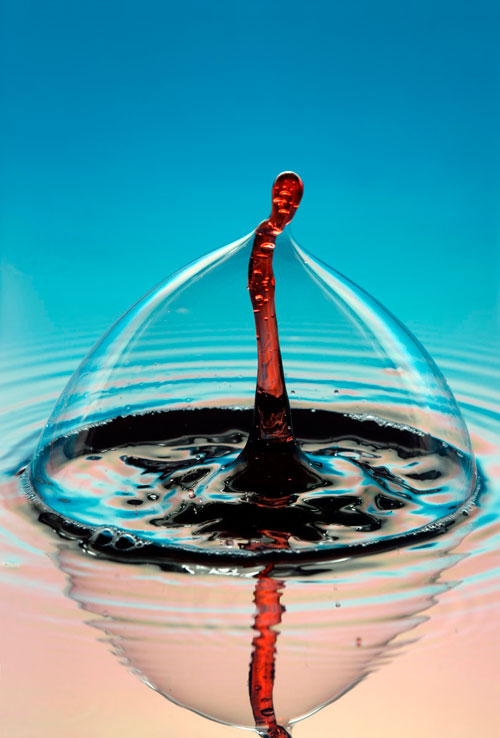
"Against the Odds"
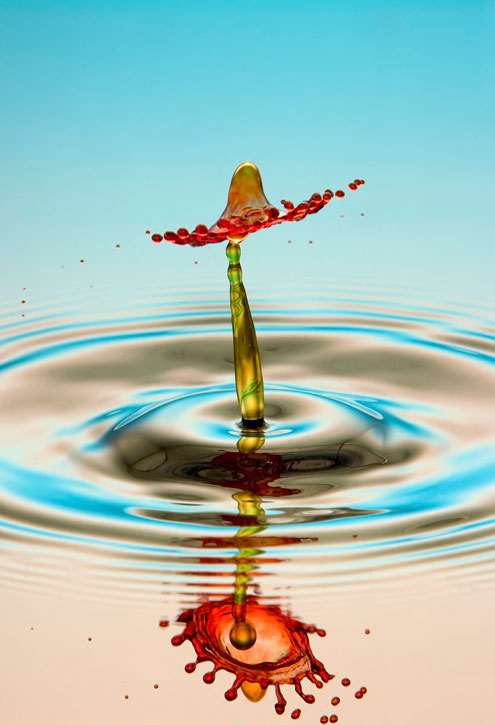
"Vaquero Joven"
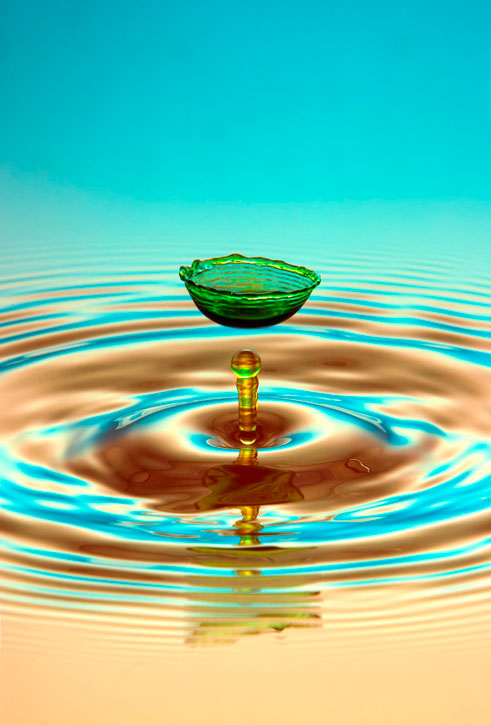
"Vegetable Bowl"